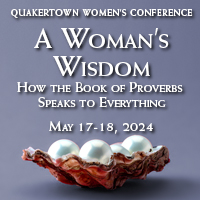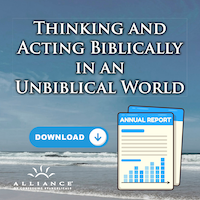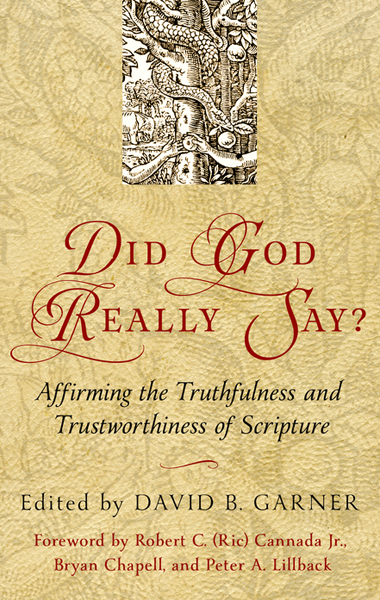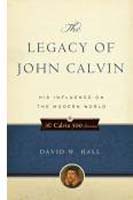
This article is part two of a two-part series. Read part one here.
Marriage, History and Theology
With magisterial grace, the Bible weds Christian theology to the male/female distinctions in God’s creation of marriage. Space permits only a brief consideration of this mysterious and intricate knot.
Adam and Eve are one flesh, but they are not one person. Their union is vital and real, yet for that to be the case, their distinct identities endure. Adam is not Eve, and Eve is not Adam. This personal and gender distinction is a sine qua non of marriage itself.
Many have argued for heterosexual marriage, with a degree of measurable success, from anatomical differences between the genders. Others have noted patterns in the psychological and emotional distinctions between then sexes, finding rich complementarity dependent upon embedded gender diversity. United by divine institution, these marvelously distinct genders become one flesh. But their one flesh solidarity does not obviate their differences. Marriage makes two gloriously one, but preserves the distinctiveness of the two in this dynamic of mysterious oneness.
But there is much more involved here in the case for heterosexual marriage. The vitality of gender distinction extends beyond the institution of marriage itself. Woven into the fabric of our binary, heterosexual gender distinctions lies a divinely-revealed theological treasure. God imbues his design of the marital relationship with covenantal, relational (and eschatological!) significance, making the visible human institution a walking sermon of divine love for fallen man.
With impenetrable yet discernible intimacy (see Ephesians 5:18–33), God consistently expresses his love for his people in marital terms. This divine–and amazing—love culminates in his Son Jesus Christ who sacrificially, permanently, and intimately loves his Bride.
Christ Jesus is Head of his Church and as such, stays distinct from her. Adam is not Eve. Christ is not his Church. Thus, union with Christ does not involve conflation or confusion with Christ. Christ remains Head of the Church, and the Church becomes his Bride. Note well. This not Self-love, but the most selfless of loves. Christ does not die for himself, but for his Bride. Christ is not the Church, and the Church is not Christ. His pursuit of his Church involves no self-preservation; it does entail a staggering sacrifice for his Bride!
Even the Pauline body metaphor ought to be seen according to this theological perspective. By faith in Christ, the Church becomes his bride, his body. The Church does not somehow become the arms and legs of his body, with his head resting upon our own frame. [1] The biblical gospel never brushes a blurry line between the Redeemer and the redeemed. Rather, the Church is his own by virtue of his marriage to her. His Bride is his possession and his treasure, given for his tender care and selfless love. As his body, his bride belongs to him; she does not become him.
Gender Confusion, Gospel Rejection
Denial of Adam and Eve as our First Parents triggers a tidal wave of theological distortions. If we lose Adam and Eve’s unique creations by God, we pervert the dignity of humanity. And in the loss of such dignity, we lose marriage as divinely purposed. If we lose God’s definition of marriage, we distort the meaning of the relationship between God and his people. We distort the gospel itself!
In brief, abandon Adam; lose Christ. Abandon Eve; forfeit the Church. Confuse Adam and Eve; reject divine redemption.
To bring this into contemporary wrangling, note well that divine purpose in marriage directly opposes same-sex marriage. Claiming that Adam can marry Adam or that Eve can marry Eve voids the God-given meaning and purpose of marriage. It asserts a rebellious morality, but also projects a theological distortion.
According to biblical argument, the theological trajectory rides directly upon the creation of male and female. In fact, so tightly tied is the Adam/Christ and Eve/Church typology, marriage must be heterosexual: Christ and his Church remain permanently distinct. As Irenaeus recognized millennia ago, the typology of Adam includes a biblically rich typology of Eve. To be clear, the relational and communicative mutuality between Redeemer and redeemed depend on the divinely appointed gender distinctions. Diversity preserves the living theological purpose of God for marriage.
With no clear difference preserved between the genders, we find ourselves confronted with no real difference between Christ and his Church. This lack of distinction perverts the Redeemer/redeemed distinctions and forces a sordid auto-soteriology (self-made salvation). We can save ourselves, even as we can marry whomever we wish. Insistence on same sex marriage produces such soteriological (salvation) and ecclesiastical (Church) rotten fruit.
Conclusion: Saying “I Do”
Uncreating our First Parents and turning the Genesis narrative into myth creates unsalvageable damage to marriage and creates a false theology of salvation and the Church. The stakes are that high. Confuse Adam and Eve, redefine marriage according to contemporary cultural norms, and turn the gospel into meaningless mush. This imposter gospel is far from good news.
What is the only valid response to God’s creation of our First Parents? Faith and gratitude. What is the only legitimate response to the divine distinction between genders? Submission and respect. Gender distinction exists for our moral and theological stewardship, not for our piracy and idolatry.
What is the only faithful response to the divine creation of exclusively heterosexual marriage and its rich theological portrayal of our loving relationship with the Son of God by faith? As the Bride says, “I do” to the Groom, so the Church says, “I do” to her Beloved Husband.
[1] It is noteworthy that Paul sees the body of Christ with “ears” and “eyes” (see 1 Corinthians 12:12–26). Parts of the head are parts of the distinct body of Christ!

The Alliance of Confessing Evangelicals is member supported and operates only by your faithful support. Thank you.
















 © Alliance of Confessing Evangelicals
© Alliance of Confessing Evangelicals


